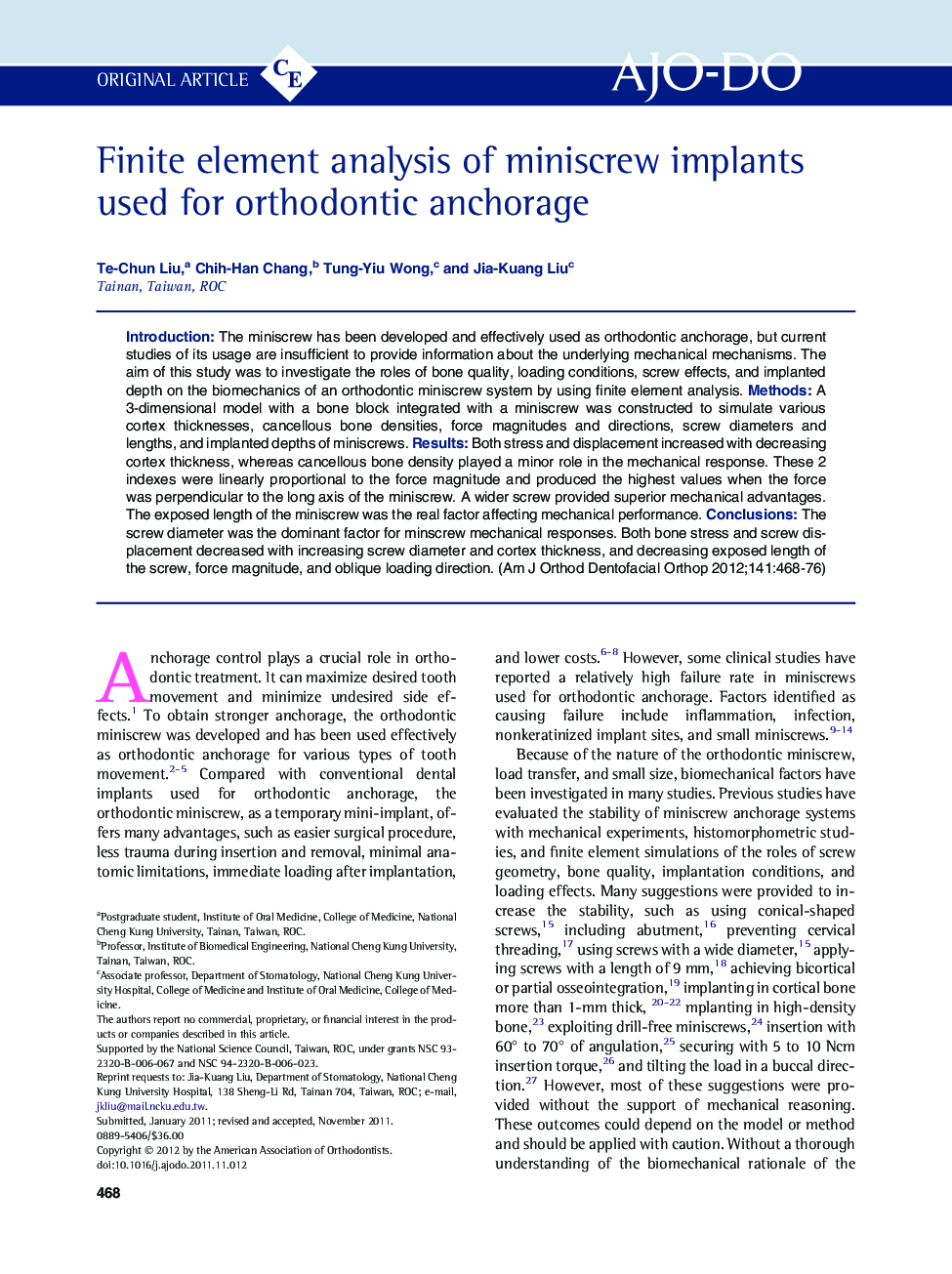| Article ID | Journal | Published Year | Pages | File Type |
|---|---|---|---|---|
| 3117426 | American Journal of Orthodontics and Dentofacial Orthopedics | 2012 | 9 Pages |
IntroductionThe miniscrew has been developed and effectively used as orthodontic anchorage, but current studies of its usage are insufficient to provide information about the underlying mechanical mechanisms. The aim of this study was to investigate the roles of bone quality, loading conditions, screw effects, and implanted depth on the biomechanics of an orthodontic miniscrew system by using finite element analysis.MethodsA 3-dimensional model with a bone block integrated with a miniscrew was constructed to simulate various cortex thicknesses, cancellous bone densities, force magnitudes and directions, screw diameters and lengths, and implanted depths of miniscrews.ResultsBoth stress and displacement increased with decreasing cortex thickness, whereas cancellous bone density played a minor role in the mechanical response. These 2 indexes were linearly proportional to the force magnitude and produced the highest values when the force was perpendicular to the long axis of the miniscrew. A wider screw provided superior mechanical advantages. The exposed length of the miniscrew was the real factor affecting mechanical performance.ConclusionsThe screw diameter was the dominant factor for minscrew mechanical responses. Both bone stress and screw displacement decreased with increasing screw diameter and cortex thickness, and decreasing exposed length of the screw, force magnitude, and oblique loading direction.
